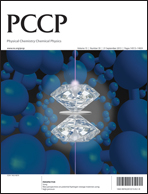The electrical conduction properties of ruthenium oxide nanocables are of high interest. These cables can be built as thin shells of RuO2 surrounding an inner solid nanowire of a dielectric insulating silica material. With this motivation we have investigated the structural, electronic and transport properties of RuO2 nanotubes using the density functional formalism, and applying many-body corrections to the electronic band structure. The structures obtained for the thinnest nanotubes are of the rutile type. The structures of nanotubes with larger diameters deviate from the rutile structure and have in common the formation of dimerized Ru–Ru rows along the axial direction. The cohesive energy shows an oscillating behavior as a function of the tube diameter. With the exception of the thinnest nanotubes, there is a correlation such that the electronic band structures of tubes with high cohesive energies show small gaps at the Fermi energy, whereas the less stable nanotubes exhibit metallic behavior, with bands crossing the Fermi surface. The electronic conductance of nanotubes of finite length connected to gold electrodes has been calculated using a Green-function formalism, and correlations have been established between the electronic band structure and the conductance at zero bias.

You have access to this article
 Please wait while we load your content...
Something went wrong. Try again?
Please wait while we load your content...
Something went wrong. Try again?


 Please wait while we load your content...
Please wait while we load your content...